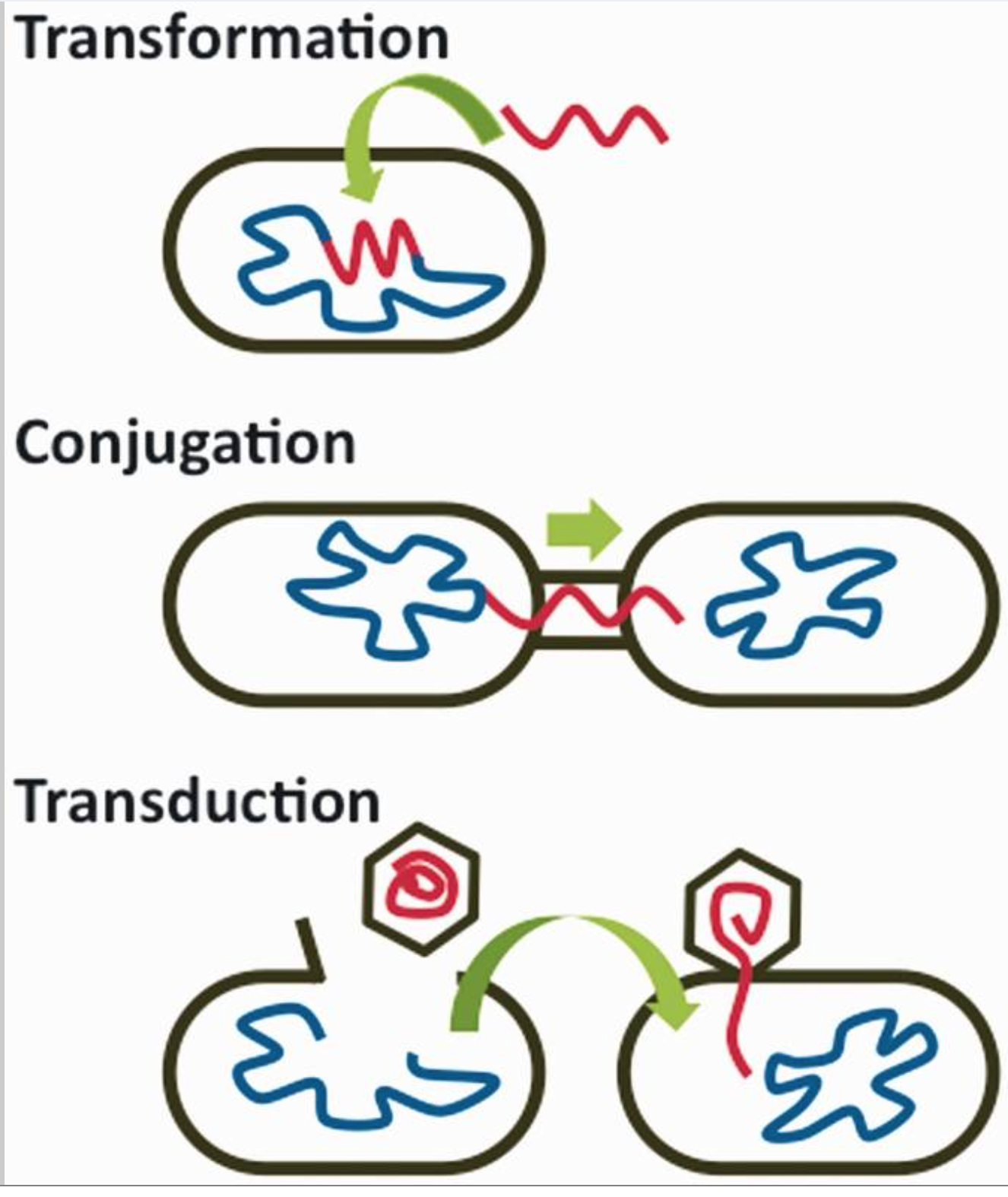Horizontal Gene Transfer
Besides from sexual and asexual reproduction, another way bacteria can pass on their genetic materials to another bacteria is through horizontal gene transfer. Unlike humans, who transfer genetic materials vertically from parents to offspring(s), microorganisms such as bacteria are able to transfer their genetic materials to an unrelated microorganism or a microorganism of the same generation. This method of genetic transfer contributes to the evolution of both the prokaryotes and eukaryotes, though it is definitely more common amongst prokaryotes. Now, how exactly are genes transferred horizontally? The process of horizontal gene transfer includes three mechanisms: transformation, transduction, and conjugation.
One mechanism of horizontal gene transfer is transformation. After a cell dies, its outer membrane disintegrates, allowing for the genetic materials within the cell to leak out. Naturally competent bacteria are then able to absorb these foreign genetic materials through special proteins as if it were their own and incorporate them into their own genetic materials. Another mechanism is transduction, which involves the lytic cycle. After the bacteriophages infect the bacteria, the bacteria, or the host cells, would be forced to produce more phages before disintegrating. Sometimes the newly produced phages may contain a small fragment of the bacterial DNA that would be transferred into other bacteria once the bacteriophages infect them. Lastly, the conjugation process occurs in bacteria that contain plasmid with the gene that allows for the creation of a sex pilus where the replicated plasmid would be transferred. Sometimes a small fragment of bacterial DNA would get attached to the replicated plasmid, and it would be transferred into a new bacteria along with the plasmid through the sex pilus.
Picture Source: Mechanisms of bacterial horizontal gene transfer: ncbi.nlm.nih.gov/pmc/articles/PMC4536854

